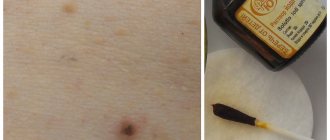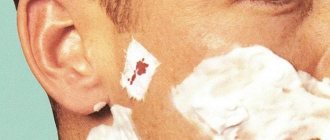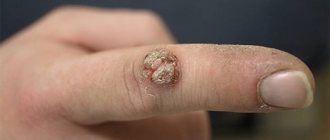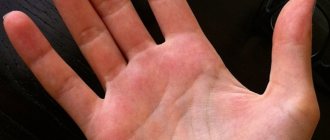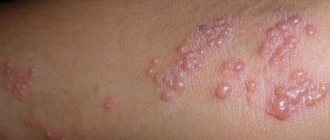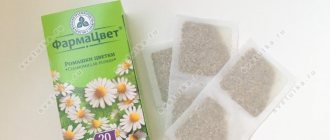Human papillomavirus is one of the most common infectious diseases. Understanding that you are infected with it is not so easy. Only an experienced specialist can make a diagnosis. To do this, the patient needs to undergo the necessary tests. If there are no external manifestations, then this is not yet a reason to think that you are not infected. But what will happen if you tear off a wart yourself is scary to even think about, because bleeding cannot be avoided.
Causes
Warts are considered benign skin growths. The cause of their appearance is the human papillomavirus, which is transmitted through various types of contact between people. Today, more than 600 strains of HPV are known and more than 60% of people are carriers. The age at which these formations appear is not important, but it has been noted that in most cases, warts begin to grow in children and adolescents. Older people are least susceptible to this.
Reasons why warts occur:
- infection with a virus from a sick person;
- decreased immunity;
- hormonal changes that occur during adolescence;
- hormonal imbalance in adults;
- diabetes;
- excess weight;
- pregnancy;
- sexual activity at an early age;
- unprotected sexual intercourse;
- hypothermia;
- features of professional activity;
- neglect of personal hygiene rules.
Features of warts to damage
A wart is a growth on the skin that is quite easily injured.
This may cause pain and even bleeding. Most often, changes in the integrity of the wart occur in those parts of the body where the growth is regularly exposed to mechanical stress - hands, feet, thighs and others. The growth can also be picked off, torn off or trimmed during shaving. It happens that the injured growth dries out painlessly and leaves no trace of itself. But it happens that even if you don’t touch the wart too much if it rubs against clothing, it suddenly falls off or gets damaged, and it hurts, bleeds and becomes inflamed. This situation is related to the structure of the growth, for example, it has a thin knife or has already been injured before.
We recommend reading:
- Dry wart
- Types of warts
- Laser removal of warts
A peeled growth is also dangerous. After all, it is through a wound (crack, scar) that the infection can be transmitted to one of the other people. Therefore, if you are aware that you are affected, try not to touch others, and treat the injured area with hydrogen peroxide and cover it with an adhesive plaster.
First, let's figure out what happens if you accidentally pick off or decide to cut off a wart, and what to do about it?
- Bleeding. It is often very difficult to stop.
- It is very easy for an open wound to become infected with a fungus or other infections, the entry of which into the bloodstream is very dangerous.
- Scars. There is a more aesthetic side here. If the papilloma has formed in a visible place, the scar can cause discomfort.
Is it possible to cut off warts on your own and without a doctor’s advice? Then you should carry out a few simple manipulations, and then contact a specialist:
- first treat the wound with antiseptics;
- then apply a bandage so that the scar heals normally and does not come into contact with the environment, or cover it with a bactericidal plaster;
- consult a specialist to find out whether the severed papilloma poses any danger.
Additionally, you need to find out from your doctor all the recommendations for combating HPV. Therefore, if you have condylomas in any place, it is best to remove them immediately. Only experienced specialists can do this without harm to health. Moreover, a pre-excised wart guarantees that it will no longer become malignant (if it is cut out from the roots).
Why does a wart become inflamed?
The wart itself consists of epithelial cells and has no nerve endings. Such formations are painless to the touch, they can be localized on various parts of the body: on the face, arms, back, abdomen, groin, under the arms, on the legs, on the feet, on the fingers and toes.
What is a wart?
Usually, growths located in places that are often in contact with external factors become inflamed, for example, on the feet, on the back in the waist area, on the fingers.
A papilloma can become inflamed if it is hit, pressed hard and for a long time, picked off, or touched with a sharp object. Neglect of hygiene is also fraught with inflammatory processes on the skin and other dermatological diseases.
It is recommended to remove growths located in traumatic areas as soon as possible, otherwise you will have to constantly suffer and endure discomfort.
Is it possible to tear off a wart yourself?
Removing the tumor is possible, but only if you do not rip it off. The safest thing to do is consult a specialist, where there are several methods for getting rid of warts. This may be exposure to liquid nitrogen, laser, radio waves, or surgical excision.
Remember that if you are going to pick or pick off a wart, you increase the risk of cancer.
Cutting off a wart in a clinic guarantees the absence of a scar or any scar at the location of the growth. Of course, there is no absolute guarantee that the wart will not appear again.
Possible consequences of a severed wart
If you accidentally pick off a wart or cut it off with a sharp object, serious complications can develop. The most dangerous consequence is the addition of a secondary infection. Pathogenic microorganisms penetrate an open wound and multiply quickly. Failure to see a doctor in a timely manner can result in serious disruptions in the functioning of the body and death.
In the best case scenario, if you pick off a wart, a new one will grow in its place. This is a virus that sits deep in the layers of the skin and has a root. Simply ripping off the growth is not enough; penetration inside and elimination of the pathogen is required. This can only be done in a medical facility.
Warts cause unpleasant associations in people, and many carriers face the problem of removing them. Carriers of the virus may be unaware of the disease and mistake small balls on the body for a cosmetic defect that can be torn off, cut off, or masked. Unfortunately, such actions lead to the development of complications and more active attacks of the HPV pathogen. Due to incorrect actions, you can, at best, get a scar, or at worst, become the owner of numerous warts. Do not perform removal procedures yourself. Entrust the work to a specialist.
What happens if you tear off a growth
What happens if you pick off a wart? When you try to remove a wart yourself, you may see blood. In some cases, the wound may be large, which will scare you with quite heavy bleeding and lead to prolonged healing of the damaged area. I tore off a wart, what should I do and why is it dangerous? Damaged skin is an excellent breeding ground for pathogenic bacteria, which leads to a host of diseases. This is especially dangerous for people with reduced immunity. In addition, this can lead to the formation of a scar or scar, which will have to be removed using additional methods in the clinic.
During the healing process, purulent discharge may also occur, and the damaged area may become inflamed and painful. Under no circumstances should you tear off areas of healing skin.
If you decide to check what will happen if you cut off a wart or papillomas, you must quickly seek qualified help from a specialist who can properly treat the damaged area so that there is no scar left.
What to do when you rip it off?
Sometimes the integrity of a growth on the body is broken completely by accident. If a wart comes off or tears, you need to take a number of preventive measures that will reduce the risk of infection and spread of the virus to healthy areas of the skin. For this purpose it is necessary:
- Treat the skin with a disinfectant. It is quite possible to use any disinfectant that is at hand, for example, hydrogen peroxide, Chlorhexidine, Miramistin, etc.
- Cover the wound with a bandage to prevent infection. It is best to use a special sterile patch, the central part of which is not adhesive.
- Seek medical help.
If suddenly the wart was injured, but remained on the skin, you should not try to pick it out or cut it off. Such a neoplasm should be shown to a doctor as soon as possible.
How to stop bleeding?
Warts are insidious in that even after minor damage they can bleed for a long time, and stopping the bleeding can be very difficult. If there is blood coming from the growth, it is worth folding a small piece of sterile bandage in several layers and pressing it more tightly to the problem area. Keep the bandage on for about 10 minutes, and during this time the bleeding should stop. Next, you can treat another piece of bandage with an antiseptic and press it again to the wound. For processing you can use:
- Hydrogen peroxide.
- Potassium permanganate solution.
- Fukortsin.
- Medical alcohol.
- Propolis tincture.
Keep the antiseptic compress on for about five minutes or more. This will help stop the bleeding.
If suddenly a wart bleeds on its own without injury, and bleeds quite regularly, you must definitely show it to a doctor, and the specialist will decide what to do next with the growth. Such a symptom may indicate the development of cancer.
Further treatment
If the wart has been injured, it cannot be treated at home. Such a growth should definitely be shown to a doctor. The specialist can:
- Carry out an inspection.
- Order a number of additional studies, including skin scraping and biopsy.
- Remove any remnants of the wart directly at the appointment, including using a regular scalpel. The doctor can send such material for histological examination to detect cancer cells.
- It is recommended to remove the remaining growth using cryotherapy, laser or radio wave treatment.
- Prescribe medication, for example, taking antiviral or antiseptic drugs.
Any treatment of warts on the body must be performed under the supervision of a doctor.
Treatment of warts
It is worth saying right away that there is no specific treatment for the human papillomavirus today. Drugs that could save people from this disease have not yet been invented. But this does not mean that you should give up on your health. Medicine can offer various methods that will help eliminate the manifestations and consequences of the virus. It is known that the human immune system is able to defeat the disease on its own, and in 90% of cases this happens within two years. If you do not want to rely on chance and wait several years, then we suggest that you use complex therapy, which includes immunomodulatory drugs and destruction.
Immunomodulators include:
- interferon;
- inosine prabex;
- cidofovir
Destructive methods:
- cryodestruction using liquid nitrogen;
- electrocoagulation;
- laser coagulation.
If treatment measures are not taken on time, a damaged tumor can spread to other areas of the skin and mucous membranes, so be careful and if there are any changes in the condition of the wart, consult a doctor for help!
The article has been verified by the editors
Why you can't cut off a wart
HPV makes itself known by growths on the human body. Depending on the strain of the virus, papillomas grow in different areas of the skin. Favorite places of localization: face (nose, cheeks), neck), abdomen, lower back, back, arm (elbow, palm, finger), leg, for flat tumors - foot (sole, heel. The infection loves places exposed to the greatest friction and pressure There is even a periungual type, intimate (condyloma). Benign tumors are often subject to injury. It happens that the pendulous papilla is completely separated from the skin. This threatens:
- self-infection of healthy covers - blood from a wound contains viral particles, if it begins to spread, infection cannot be avoided. The risk is increased by the presence of injuries and abrasions;
- bleeding - a wart consists of a vascular and capillary network that provides a constant flow of oxygen and nutrients. If damage is caused, heavy blood loss will begin;
- infection - an accidental injury opens the gates for pathogenic microorganisms that provoke an inflammatory process;
- scarring - the wound can be replaced by rough connective tissue.
